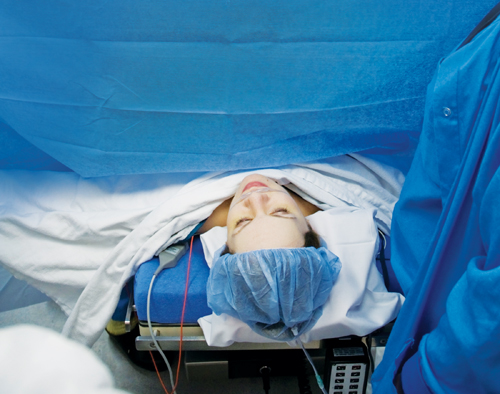Special delivery: C-section 101
Nine months of waiting requires patience enough for most moms-to-be, […]
Nine months of waiting requires patience enough for most moms-to-be, but mamas who have caesarean births need to save up just a little more emotional fortitude for the impending recovery period. Whether your C-section is scheduled in advance or ends up being a last-minute decision, the healing time for the incision is generally the same: around four to six weeks. During that time, it will be important to remember you’ve not only just had a baby, but undergone major surgery as well. Tough as it may be to fight the urge to hustle and bustle while taking care of your new addition, you’ll need to focus on yourself to ensure you’re physically able to tackle motherhood head-on as soon as possible. Let’s take a look at the recovery process so you can manage your expectations accordingly.

Within 24 hours of surgery, you’ll want to get up and walk around a bit. (Well, you may not want to, but you’ll definitely need to.) Having a C-section increases your risk of blood clots, but moving around shortly after surgery greatly reduces this risk. Natalie Schmeichel, mom of one in Cartersville, Georgia, recalls the importance of walking after her C-section: “The more I moved, the less stiff I became. When you’re going through it, it seems like walking is the last thing you should be doing, but it made all the difference in my recovery time.” Walking also helps get your digestive system moving again, which can combat the constipation problems that typically accompany caesarean deliveries.
Milky way
If you plan to breastfeed, it’s important to check with your physician to ensure any medication you’re considering taking is safe for both you and baby. If you’ve started trying to breastfeed but the well seems dry, don’t fret—many mothers who have caesarean births experience a delay in the arrival of their milk. However, should you struggle with nursing post-op, it may be beneficial to contact a lactation consultant. Shari Aizenman, a birth and labor doula and massage therapist in Atlanta, suggests that mothers contact their local La Leche League chapter for support. Try different nursing positions as well (see sidebar for guidance on achieving the football hold) until you find one that’s comfortable for you.
A little help from your friends
Most C-section patients are hospitalized for three days or so before they’re released to go home. During this time, don’t be afraid to ask your family and friends to help prepare the house for your arrival. Remember, short walks are good for your recovery but excessive housework and stair-climbing are not. View this recovery period as an opportunity to continue the prebaby pampering post-delivery. Many moms find it helpful to have family members stay over for a while to assist with housework, prepare meals, and even take care of the baby. “Moms need to have support,” says Aizenman. “Moms who have birthed by caesarean need to follow their intuition and ask for what they need.” If your family and friends are miles away, she suggests finding a postpartum doula to assist you during the recovery process. You’ll also likely be under the influence of pain medication for days—if not weeks—while you heal, so your support group will be vital during this time. By accepting the help you’re offered, you’ll allow your body to rest and encourage a quicker recovery.
Slow and steady wins the race
After a C-section, the heaviest thing you should lift is your newborn. The incision site will be sensitive for weeks to come, so you’ll want to take extra care to avoid irritating—or worse, opening—the wound. Remember to lift with your legs, not your waist, to protect the incision and maintain good posture to support your back and abdominal muscles. You’ll also want to wear loose clothing so the wound can breathe and remain dry.
Processing the process
Aside from the walking, the watching, the itching and the medication, the most important thing to remember after a C-section is what else it brought into your life—your baby! You might initially feel disappointed or discouraged if you had your heart set on a vaginal delivery, but know that it’s OK to address those emotions. “Share your story. Seek out emotional support and education,” says Aizenman. “Know, for sure, that you can heal. Your body can heal. Your mind can heal. Your spirit can heal.” Schmeichel, who required a last-minute emergency C-section during her delivery, describes her emotions after the experience: “I was a little sad once everything was over. I kept feeling like I had missed out on the miracle of pushing and giving birth. I kept thinking that I could have somehow prevented needing a C- section. I gave myself permission to grieve, but only for a minute. Nothing I could have done would have changed the way my body handled the situation, and no matter how she arrived, my baby was healthy and safe in my arms.” Once you’ve acknowledged any negative emotions associated with the delivery method, you’ll be able to work through them and eventually move past them altogether. Trust us, once the fog of pain medication fades away and you’re back in action with your new bundle of joy, you won’t want to think about anything else.







